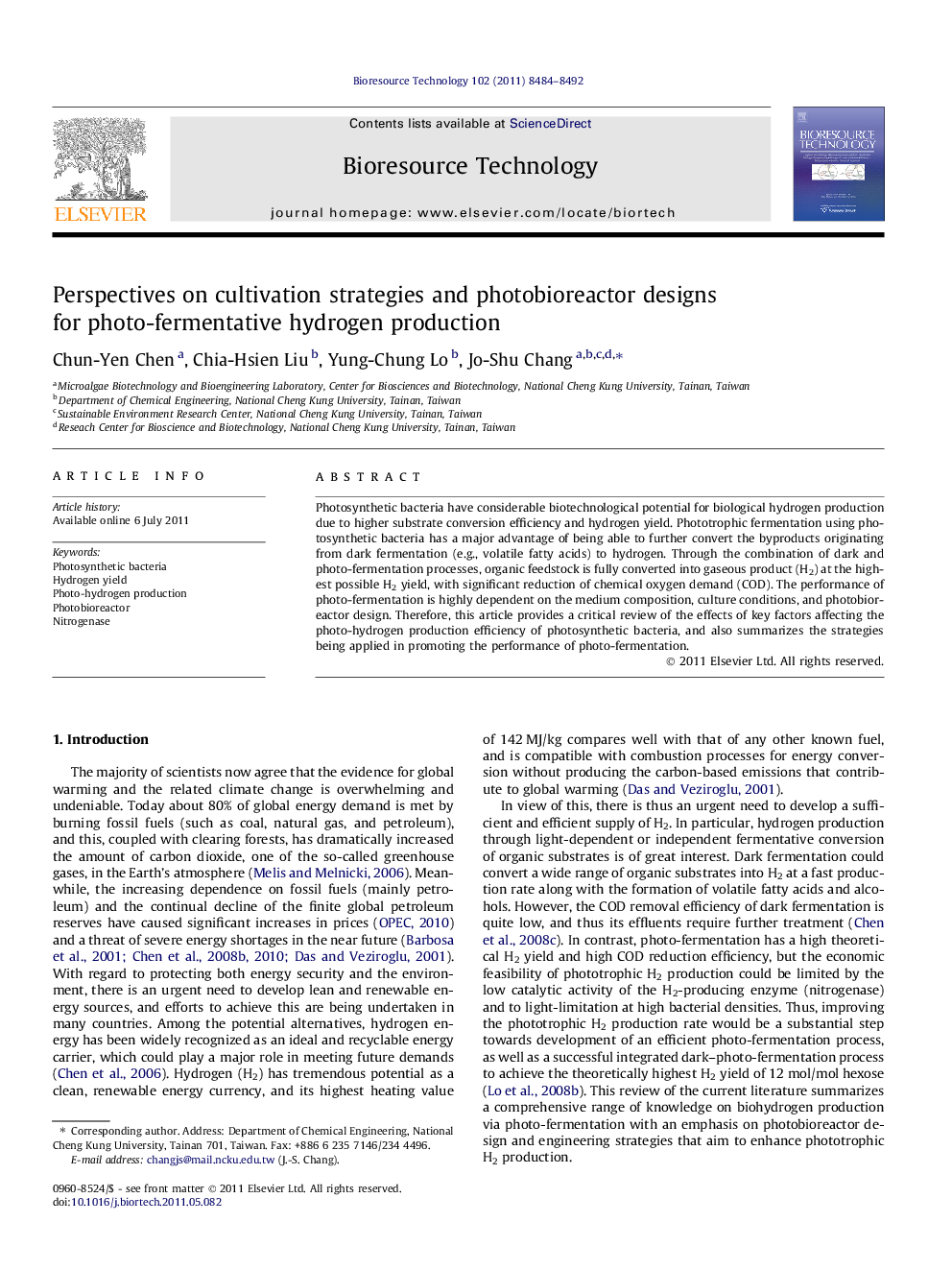| Article ID | Journal | Published Year | Pages | File Type |
|---|---|---|---|---|
| 681769 | Bioresource Technology | 2011 | 9 Pages |
Photosynthetic bacteria have considerable biotechnological potential for biological hydrogen production due to higher substrate conversion efficiency and hydrogen yield. Phototrophic fermentation using photosynthetic bacteria has a major advantage of being able to further convert the byproducts originating from dark fermentation (e.g., volatile fatty acids) to hydrogen. Through the combination of dark and photo-fermentation processes, organic feedstock is fully converted into gaseous product (H2) at the highest possible H2 yield, with significant reduction of chemical oxygen demand (COD). The performance of photo-fermentation is highly dependent on the medium composition, culture conditions, and photobioreactor design. Therefore, this article provides a critical review of the effects of key factors affecting the photo-hydrogen production efficiency of photosynthetic bacteria, and also summarizes the strategies being applied in promoting the performance of photo-fermentation.
► We review technology on photo-H2 fermentation, emphasizing photobioreactor design. ► We describe high-yield H2 production by combining photo and dark fermentation. ► We survey strategies used to solve the problems associated with photo-fermentation. ► We present recent advances on process improvement of photo-fermentation.
